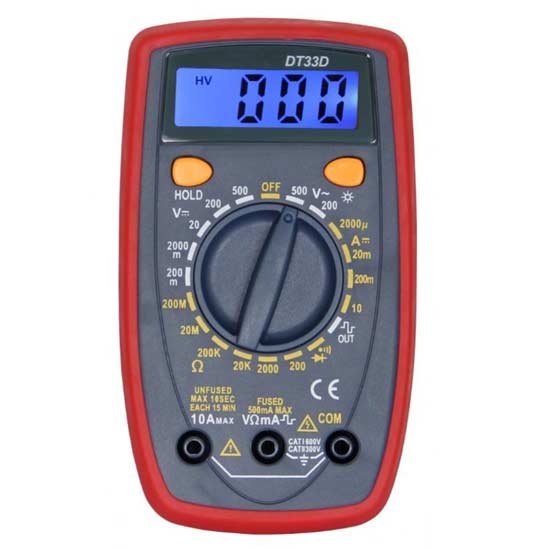Batteries play a crucial role in our everyday lives, powering a wide range of devices from remote controls to vehicles. Over time, batteries can lose their effectiveness, and it's important to know when to replace them to avoid unexpected disruptions. In this article, we'll explore various methods to test if a battery needs replacing and provide insights into battery maintenance.
Before we delve into the testing methods, it's essential to understand how batteries work and why they degrade over time. Most batteries have a limited lifespan, which is determined by factors such as usage, environmental conditions, and the type of battery. A battery tester is a device designed to assess the condition and performance of batteries. It is a valuable tool for determining whether a battery is still functional and capable of delivering the required power. Battery testers come in various types and can be used for different kinds of batteries, including alkaline batteries, rechargeable batteries, and automotive batteries.
A basic way to check if a battery needs replacing is by conducting a voltage test. You'll need a multimeter for this. Follow these steps:
Set the multimeter to the DC voltage setting, which corresponds to the battery's voltage (usually 1.5V for AA or AAA batteries).
Touch the multimeter's probes to the battery's positive and negative terminals. The multimeter should display a voltage close to the rated voltage of the battery. If it's significantly lower, the battery may need replacing.
A load test is a more advanced method to assess a battery's performance. This test is particularly useful for car batteries. Here's how you can perform a load test:
Connect a load tester to the battery. This device will simulate the demands placed on the battery.
Observe the voltage drop when the load is applied. If the voltage drops below a certain threshold, it's a sign that the battery is weak and needs replacement.
Lead-acid batteries, commonly used in vehicles, can be tested using a hydrometer. Follow these steps:
Remove the cell caps of the battery (if applicable).
Insert the hydrometer's tube into the cell and draw some electrolyte into it.
Check the specific gravity reading on the hydrometer. A low reading indicates a depleted battery.
Visual cues can also help determine if a battery needs replacing:
Look for signs of leakage or corrosion on the battery's terminals. Corrosion can hinder the battery's performance.
Inspect the battery for bulging or deformation. These physical changes can indicate an internal problem.
Here are some common questions people have about testing batteries:
Q: How often should I test my batteries?
A: It's a good practice to test batteries periodically, especially those in critical devices like smoke detectors or vehicles. For car batteries, consider testing them every three months.
Q: Can rechargeable batteries be tested using these methods?
A: Yes, rechargeable batteries can also be tested. However, keep in mind that rechargeable batteries have a limited number of charge cycles, so testing them can help determine their remaining lifespan.
Q: What should I do with old or dead batteries?
A: It's important to dispose of old or dead batteries properly. Many communities have recycling programs for batteries. This is an eco-friendly way to discard them.
Remember that testing batteries is an effective way to ensure your devices continue to function optimally. By following these methods and keeping a watchful eye on your batteries, you can stay ahead of potential power issues and avoid inconvenient disruptions in your daily life.
So, whether it's a remote control, flashlight, or your vehicle, knowing how to test and replace batteries when needed is a valuable skill.
Testing your batteries is a proactive approach to ensuring they're always ready to power your devices.
 Tool seat
Tool seat
 Stretch Cord
Stretch Cord
 Oil Pump
Oil Pump
 Sandblast Pot
Sandblast Pot
 2.25 Ton Hydraulic Floor Jack
2.25 Ton Hydraulic Floor Jack
 Magnetic Tray With Tool Plate
Magnetic Tray With Tool Plate
 Single-stage Air-cool Movable Air Compressor
Single-stage Air-cool Movable Air Compressor
 10W Rechargeable Led Flood Light
10W Rechargeable Led Flood Light
 Ice Scraper
Ice Scraper
 Small Multimeter with Backlight
Small Multimeter with Backlight
 Jump Starter With 4 Led Lights
Jump Starter With 4 Led Lights
 Steel Tool Cabinet
Steel Tool Cabinet
 Large Tool Cabinet
Large Tool Cabinet
 Tool Storage Cabinet
Tool Storage Cabinet
 Metal Tool Box
Metal Tool Box
 Large Metal Tool Storage Box
Large Metal Tool Storage Box
 Blue Metal Tool Cabinet
Blue Metal Tool Cabinet
 Red Steel Tool Trolley
Red Steel Tool Trolley
 Portable Tire Inflator
Portable Tire Inflator
 Custom Tire Inflator
Custom Tire Inflator
 Tire Pressure Pump
Tire Pressure Pump
 Auto Emergency kit
Auto Emergency kit